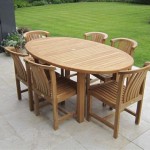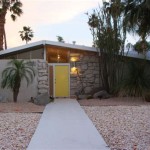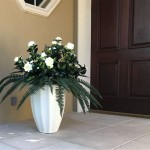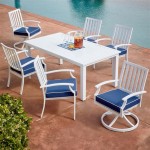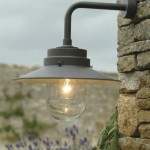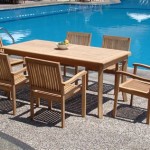Mid-Century Modern Outdoor Railings: A Design Staple
Mid-Century Modern (MCM) design, characterized by its clean lines, organic shapes, and emphasis on functionality, continues to influence architectural and landscape aesthetics. Outdoor railings, often overlooked, play a crucial role in defining the visual identity of a property, and MCM railings are no exception. They contribute significantly to both the curb appeal and the overall integration of indoor and outdoor living spaces.
The defining characteristics of MCM railings include the use of materials like wood, metal (particularly steel and aluminum), and glass. These materials are frequently combined to create visually interesting and structurally sound designs. The focus remains on simplicity, practicality, and a connection to nature. This article explores the key aspects of MCM outdoor railings, including their design principles, material choices, and considerations for installation and maintenance.
The Defining Design Principles of MCM Railings
MCM railings are not merely functional barriers; they are integral design elements that contribute to the overall aesthetic. Several key principles govern their creation, ensuring they align with the broader MCM philosophy.
Firstly, simplicity and minimalism are paramount. Ornamentation is typically eschewed in favor of clean, uncluttered lines. The design prioritizes functionality and visual clarity, avoiding excessive detail or embellishment. This minimalist approach aligns with the MCM ethos of “form follows function,” where the design is dictated by the intended purpose.
Secondly, geometric shapes are often incorporated into MCM railing designs. Straight lines, rectangles, and simple curves are common, reflecting the era's fascination with modern industrial design and mathematical precision. Complex patterns and intricate carvings are rarely seen. Instead, the focus is on the interplay of these basic geometric forms to create a visually appealing and structurally sound railing system.
Thirdly, horizontal emphasis is a recurring theme. Railings often feature horizontal rails or balusters, which visually lengthen the structure and create a sense of continuity. This horizontal orientation reinforces the connection with the landscape and promotes a sense of openness. Vertical elements are typically used sparingly, serving primarily as structural supports rather than decorative features.
Finally, the integration with the surrounding architecture and landscape is crucial. MCM railings are designed to complement the existing architectural style of the building and blend seamlessly with the natural environment. This may involve using materials that echo the facade of the house or incorporating design elements that mimic the surrounding landscape, such as the horizontal branching patterns of trees.
Material Choices in MCM Railing Design
The selection of materials significantly impacts the appearance, durability, and maintenance requirements of MCM outdoor railings. Each material offers unique advantages and considerations, influencing the overall aesthetic and longevity of the railing system.
Wood is a popular choice due to its natural warmth and versatility. Common wood species used in MCM railings include redwood, cedar, and teak, all known for their durability and resistance to rot and decay. Wood railings can be stained or painted to match the existing architectural style or to create a contrasting visual element. However, wood requires regular maintenance, including periodic sealing or painting, to protect it from the elements and prevent deterioration. Proper installation, with attention to drainage and ventilation, is crucial to prolong the lifespan of wood railings.
Metal, particularly steel and aluminum, offers a sleek and modern aesthetic. Steel railings are known for their strength and durability, allowing for slender profiles and minimal visual obstruction. They can be powder-coated in a variety of colors to match the architectural palette. However, steel is susceptible to rust and requires regular maintenance, such as cleaning and painting, to prevent corrosion. Aluminum railings are a lightweight and corrosion-resistant alternative to steel. They are also recyclable, making them a more environmentally friendly option. Aluminum railings are often available in a range of finishes, including powder coating and anodizing, to enhance their durability and aesthetic appeal.
Glass is another material frequently incorporated into MCM railing designs. Glass panels can be used as infill between posts or as the entire railing system itself, creating a seamless and unobstructed view of the surrounding landscape. Tempered glass is typically used for safety reasons, as it is much stronger and more resistant to shattering than regular glass. Glass railings require regular cleaning to maintain their clarity and transparency. The glass panels are usually combined with metal posts and supporting structures to provide structural stability. The combination of glass and metal offers a contemporary aesthetic that aligns with the MCM design principles of clean lines and minimalist design.
The combination of different materials is also a common practice in MCM railing design. For example, wood posts may be paired with steel rails, or metal supports may be used to secure glass panels. These material combinations allow for a greater degree of design flexibility and can create visually interesting contrasts. When combining materials, it is important to consider their compatibility and ensure that they are properly joined and sealed to prevent water damage and corrosion.
Installation and Maintenance Considerations for MCM Railings
Proper installation and regular maintenance are essential for ensuring the longevity and safety of MCM outdoor railings. Careful planning and attention to detail during installation can prevent future problems, while routine maintenance can preserve the railing's appearance and structural integrity.
Before installation, it is crucial to verify local building codes and regulations. Railing height, spacing between balusters, and structural requirements may vary depending on the location and the type of property. Obtaining the necessary permits and adhering to building codes ensures that the railing is safe and compliant with legal requirements. A professional contractor with experience in MCM railing installation can provide valuable guidance and ensure that the installation is performed correctly.
During installation, proper anchoring is critical. Railing posts must be securely anchored to the deck, porch, or stairs to provide adequate support and prevent movement. The type of anchoring system will depend on the type of substrate (e.g., wood, concrete) and the weight of the railing. Using the correct fasteners and following the manufacturer's instructions are essential for ensuring a secure and stable installation. Proper drainage should also be considered to prevent water from accumulating around the base of the posts, which can lead to rot or corrosion.
Regular maintenance is necessary to preserve the appearance and structural integrity of MCM railings. The type of maintenance required will depend on the materials used in the railing system. Wood railings should be inspected regularly for signs of rot, decay, or insect damage. They should be cleaned periodically with a mild detergent and water and resealed or repainted as needed to protect them from the elements. Metal railings should be inspected for signs of rust or corrosion and cleaned regularly to remove dirt and debris. Powder-coated surfaces can be cleaned with a mild detergent and water. Scratches or chips in the powder coating should be repaired promptly to prevent rust from spreading. Glass railings should be cleaned regularly with a glass cleaner to maintain their clarity and transparency.
In addition to regular cleaning and maintenance, it is important to inspect the railing system periodically for any signs of damage or wear. Loose fasteners, cracked posts, or damaged rails should be repaired or replaced promptly to prevent further deterioration and ensure the safety of the railing. Professional inspections can be conducted to identify potential problems and recommend appropriate repairs or maintenance measures.
Ultimately, the successful integration of MCM railings into an outdoor space requires a careful consideration of design principles, material choices, and installation and maintenance practices. By adhering to these guidelines, homeowners can create a visually appealing and functional railing system that enhances the beauty and value of their property while adhering to the iconic aesthetic of Mid-Century Modern design.

Looking For Custom Mid Century Modern Open Riser Straight Stairs Signature Metal Works

Mid Century Curved Railings

Railings That Are Midcentury And Not Too Heavy

Modern Deck Railing Mid Century Home Essex Ct Kea Studios

Klopf Architecture San Francisco Mid Century Modern Remodel Midcentury Exterior By Houzz

Modern Exterior Railing Stagg Design

25 Brilliant Design Of Deck Railing Ideas For Your Beautiful Porch And Patio

1950s Patio Railings Google Search

Modern Exterior Railing Stagg Design

Sopo Cottage Recreating A Mid Century Deck

